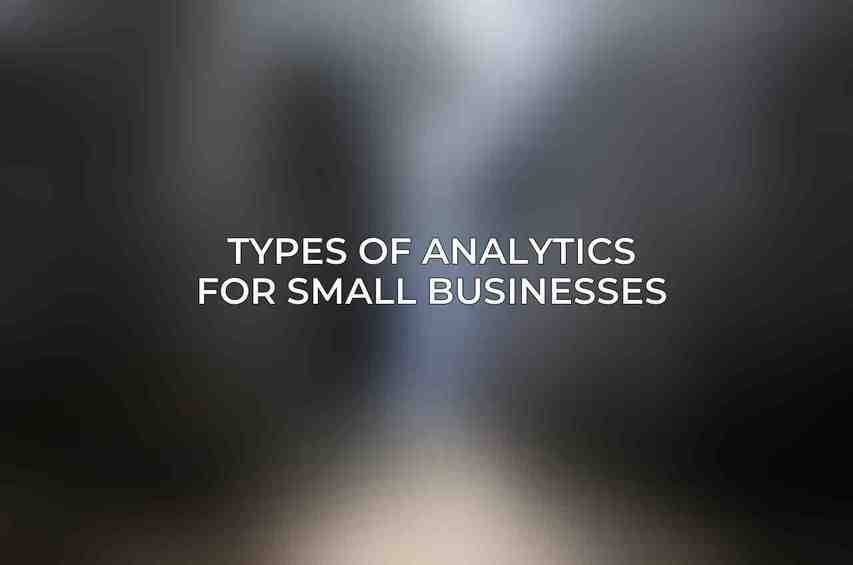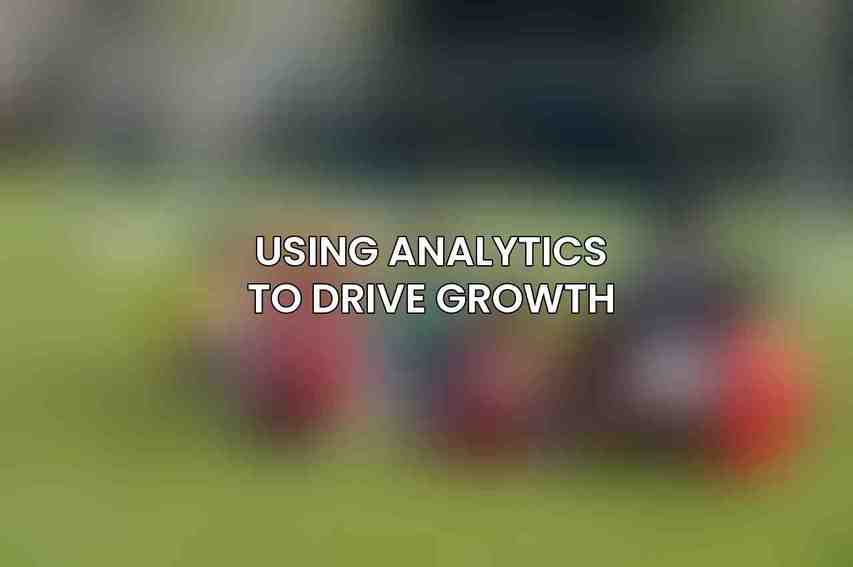analytics plays a critical role in driving strategic decision-making and enhancing performance. Small businesses, in particular, can leverage analytics to gain valuable insights into their operations, customer behavior, and market trends. By harnessing the power of data, small business owners can make informed choices that can lead to sustainable growth and competitiveness. Understanding the importance of analytics is the first step towards unlocking its potential for small business success.
When it comes to small businesses, types of analytics can vary in complexity and focus. From basic web traffic analysis to advanced customer relationship management insights, small business owners have a range of analytics tools at their disposal to monitor and improve their operations. It’s essential for entrepreneurs to identify the right analytics strategies that align with their business goals and resources.
B. Key Concepts
Small business owners must grasp fundamental concepts related to analytics to make effective use of data-driven insights. Data collection and analysis methods form the foundation of any analytics initiative. This involves gathering data from various sources, such as websites, social media platforms, and customer interactions, and analyzing it to extract meaningful information. Metrics and key performance indicators (KPIs) provide measurable values that indicate the performance of specific aspects of the business. Understanding and tracking relevant metrics can help small businesses set goals and monitor progress effectively. Data visualization tools aid in presenting data in a visually appealing and easy-to-understand manner, facilitating quick and informed decision-making.
Types of Analytics for Small Businesses

A. Web Analytics
Web analytics tools are essential for businesses looking to understand and improve their online presence. Platforms like Google Analytics, Adobe Analytics, and Amplitude offer small business owners insights into website traffic, user behavior, and campaign performance. By analyzing web data, businesses can optimize their online strategies for better engagement and conversions.
B. Social Media Analytics
Social media analytics provide valuable information about audience demographics, content performance, and engagement levels on popular platforms. Tools like Facebook Insights, Instagram Insights, and Twitter Analytics enable businesses to track the effectiveness of their social media efforts and tailor their content to meet audience preferences.
C. Email Marketing Analytics
For businesses utilizing email marketing as part of their strategy, analyzing email performance is crucial. Platforms like MailChimp, Constant Contact, and ConvertKit offer features that help businesses track open rates, click-through rates, and subscriber behavior to optimize email campaigns for better engagement and conversions.
D. Customer Relationship Management (CRM) Analytics
CRM analytics tools like Salesforce, HubSpot, and Zoho CRM enable businesses to manage customer interactions, track sales pipelines, and analyze customer data for improved targeting and personalized marketing strategies. By integrating CRM analytics into their operations, small businesses can enhance customer relationships and drive sales growth.
Data Analysis for Small Businesses
A. Data Collection Methods
Effective data collection is essential for accurate analysis and informed decision-making. Small businesses can gather data from various sources using tools like Google Analytics for website data, social media platforms for audience insights, and CRM systems for customer interactions. By collecting relevant data points, businesses can gain a comprehensive view of their operations and performance.
B. Data Analysis Tools
Analyzing data efficiently requires the use of data analysis tools that can process and visualize data effectively. Platforms like Excel, Google Data Studio, and Power BI offer small businesses the capability to generate reports, create dashboards, and derive actionable insights from their data. These tools empower businesses to make data-driven decisions and monitor their progress towards business objectives.
C. Key Metrics and KPIs
Identifying and tracking key metrics and KPIs are essential for measuring the success of business initiatives. Metrics related to website traffic and engagement, social media performance, email marketing effectiveness, and customer churn rate provide valuable insights into various aspects of the business. By monitoring these metrics closely, small businesses can identify areas for improvement and focus their efforts on strategies that deliver the best results.
Using Analytics to Drive Growth

A. Identifying Growth Opportunities
Analytics can help small businesses identify growth opportunities by analyzing customer behavior, identifying market trends, and experimenting with new ideas. By understanding customer preferences and market dynamics, businesses can tailor their products and services to meet evolving demands and stay ahead of the competition.
B. Enhancing Customer Experience
Customer experience is a key differentiator for small businesses looking to build lasting relationships with their clientele. By personalizing marketing campaigns, improving customer support processes, and nurturing strong customer relationships, businesses can create a positive brand reputation and drive customer loyalty and advocacy.
C. Increasing Sales and Revenue
Analytics can be used to increase sales and revenue by optimizing websites for conversions, tracking customer journeys to identify touchpoints for improvement, and uncovering opportunities for upselling and cross-selling. By analyzing sales data and customer behavior, businesses can implement targeted strategies to boost revenue and drive growth.
D. Reducing Costs and Waste
In addition to driving revenue, analytics can also help small businesses reduce costs and waste by identifying areas of inefficiency, automating processes, and improving supply chain management. By optimizing operations and resource allocation, businesses can streamline their processes and maximize profitability.
By harnessing the power of analytics, small businesses can gain a competitive edge in this dynamic market world. From understanding customer behavior to optimizing operations and driving growth, analytics is a valuable tool for businesses of all sizes to thrive and succeed.
By incorporating various analytics tools and strategies into their operations, small businesses can make data-driven decisions that lead to enhanced performance, increased profitability, and sustainable growth. Embracing analytics is not just a trend but a necessity in this fast-paced business environment. As Forbes puts it, “Data is the new currency,” and small businesses that leverage analytics effectively are poised to succeed in the long run.
Frequently Asked Questions
What is analytics and why is it important for small business growth?
Analytics refers to the process of collecting, analyzing, and interpreting data to make informed business decisions. For small businesses, analytics can provide valuable insights into customer behavior, market trends, and business performance, helping them identify opportunities for growth and optimization.
How can small businesses benefit from using analytics?
By using analytics, small businesses can better understand their customers, improve operational efficiency, and make data-driven decisions. This can lead to increased revenue, reduced costs, improved customer satisfaction, and overall business growth.
What are some common analytics tools available for small businesses?
There are many analytics tools available for small businesses, including Google Analytics, Adobe Analytics, Mixpanel, and Kissmetrics. These tools offer a range of features for tracking website traffic, analyzing customer behavior, and measuring marketing performance.
How can small businesses get started with analytics?
To get started with analytics, small businesses should first define their goals and key performance indicators (KPIs). They can then choose a suitable analytics tool, set up tracking codes or tags on their website, and start collecting and analyzing data to gain insights into their business performance.
How can small businesses use analytics to drive growth strategies?
Small businesses can use analytics to identify trends, patterns, and opportunities in their data, which can inform their marketing strategies, product development, customer service, and overall business operations. By leveraging analytics insights, small businesses can make smarter, more informed decisions that drive growth and success.
